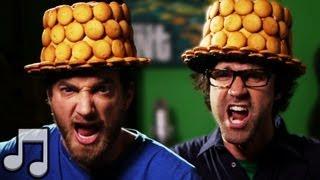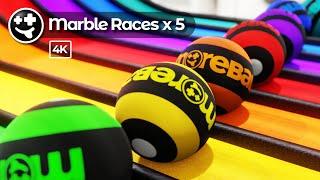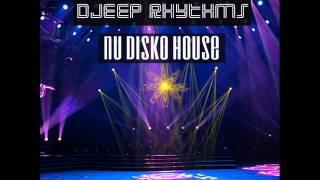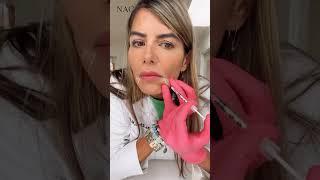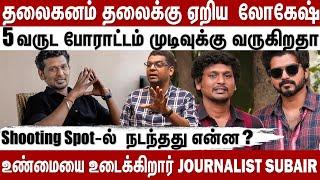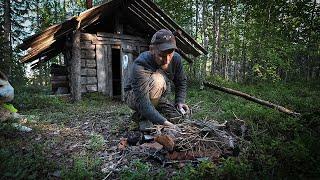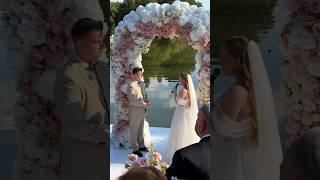
How to AVOID Blowing-Out Your Highlights FOREVER!
Комментарии:

Very helpful thanks. Nice you (Henry) someone exited about photography
Ответить
Thank you for totally explaining how to use a histogram, when to use it and why you need to use it and understand it. I have watched several videos on this subject, but your explanations were by far the best I have ever watched. I have subscribed to your channel, Henry. Thank you again for sharing your knowledge!
Ответить
An idea for a vid for us newbies is on post production What software to use and how to use it
Ответить
Thank you!
Ответить
Cheers Henry, I was struggling this weekend with bright cloudy white skies and the dynamic range. I tried to merge 3 HDR images in Lightroom but it makes the final image a bit false. I'll watch the histogram a bit more now and try and get it mostly correct in camera.
Ответить
Back from Austria and watching all the videos I've missed while I was gone. Interesting video, good tips for people who aren't sure how to use the histogram. I have to say I never really do exposure blending anymore either, I used to for a while but usually the dynamic range of the D7100 is plenty for me.
Ответить
Great video as always! Having no live histogram on my d5200, this is very useful info! I have done some bracketing, as it is a 10 year old camera and would like to get better at it.
Ответить
i wanted to share that was i out on Saturday afternoon (on 'world photography day'.. which is really every day, of course), to focus specifically on grasping the use of the histogram as explained in this video. found it was not only very easy to use actually on my nikon d3100, but could see it was the only actual way to expose properly and made me see how mistaken i'd been in relying on the image on the LCD screen, which, - is very bad, as you rightly said. felt a riight wally. thanks to the information in this video, it has already made a big difference and given me a sense of confidence and ...dare i say, skill. it's also very true that a few people can repeat the same useful info., but am only going to actually Listen, to the ones on my wavelength.🙏🏼📷👏🏼
Ответить
Thank you for all the info and help you give
Ответить
Very helpful thank you for making it easy to understand. Love your channel.
Ответить
I always expose for the brightest part of the image which is mostly the sky. I do in certain situations use bracketing but most of the time shooting in raw I find bringing up the shadows in post is not much of a problem. Thanks for another great video .. always good to see how other photographers work and stops me from being set in my ways and trying out other techniques. 👍
Ответить
That seems like good advice Henry but my camera doesn't have live view or a histogram how do I achieve perfecr exposure?
Ответить
Another helpful vid, Henry. I set my U1 settings for bracketed exposures - and my setting include not just the bracketing settings, but also renaming the bracketed files as "HDR," so I can easily find them when I download the shots. All I need to do when switching to U1 is make sure the shutter is on high-speed ("H") and I'm ready to go. I find that for high contrast shots, bracketing and blending provides a better starting point than shooting without bracketing and adjusting shadows and highlights.
Ответить
Hey Henry, I also shoot z7 but tend to use the auto 3/5 bracket. I suppose its the lazy way. Maybe I should just take the 2 shots as you suggest. Keep up the good work. Like the Berlingo 👍
Ответить
I could of done with the bracketing feature last night there was a combine harvester cutting in the field across the road and a gorgeous sunset oh well maybe next year !!
Ответить
Another awesome video! Thanks for what you do Henry.
Ответить
Just popped in my head at the point where your pointing out the exposure meter is out the old saying camera never lies lol oh yes it does 😂😂😂
Ответить
Quite a good video.
Having only more recently delved into better cameras ( Z50,Z7II,Z9.... went nuts) , getting the facts on what is a realistic expectation from any of my cameras is not that easy to come by.
This histogram thing has had me beat for a while . I have 12 stops of dynamic range so is that the width of my histogram ?. From your explanation , yes.
Also importantly , that's it ,no more. Other measures must be found if outside that.
No one actually states that.

Nice Vid. Nice work on Histogram...I learnt something, thank you
Ответить
I have to say that exposure blending I stopped doing when I shot with a Sony because it had better dynamic range. I went back to an older DSLR and found that I actually have more play with pushing and pulling files than I ever did with a single exposure from the newer camera. So I would say that you will have more play and better images if you bracket them even with a newer camera.
Ответить
Hi, I watch you every week and love your videos and images, what external hard drive do you save your images to, please thanks
Ответить
Iv always endeavoured to capture in one shot …. I think its because I learnt the basics back 30 years ago using film where blending was not really an option bar a bit dodge and burn in a dark room. Ive defo found it a lot easier as the dynamic range of cameras has improved. Exposure blending is something I have always felt like learning but never really have. I guess because iv used the HDR tool as a short cut in affinity… but that doesnt work if you are shooting seascapes or water as the foreground water and clouds can be different in each shot. U must be able to do it manually in affinity but ive never quite worked it out or found out how… i think you are right and I should…. But more often than not the R5, a soft grad filter and exposing for the highlights and pushing the shadows gets me out of jail… so 10 years into digital and i still dont really know how to blend bracketed images! 😂 …. I guess iv found my photography goal for the rest of the year!
Ответить
Hi Henry, nice video as usual. I didn't read all the comments already posted (but I read quite a few), and i didn't see anything about this. the first example you gave, the waterfall shot, is, I think, not quite right. the histogram, and/or meter, reads the instantaneous overall scene, not the accumulated scene of the 1/4 second exposure. i mean, usually they're the same, but with a cascades scene in particular, the 'white' parts of the image move around quite a bit, accumulating 'white' in different parts of the image milliseconds apart. said another way, what is dark one millisecond, is light a millisecond later. and its the light that accumulates, changing the gritty instantaneous scene that we see with out eyes, or with a fast shutter speed, into the smooth silky flow of water. Therefore, I believe the histogram prior to taking the shot, and the histogram of the image taken, will differ, with the image showing much more white than the scene. its worth reviewing the image after, to make sure you have the level of detail in the water flow you want.
Ответить
Hi Henry, yeah totally agree with you....I use my ND filters a lot less now and as a Sony alpha user the shadow recovery is amazing 👍
Ответить
Another great video Henry.
Very good advice.
I must use my histogram more often.
Look forward to the next one.

Thank you, another enthusiastic and interesting update. 👍👏
Ответить
The one time where you're allowed to blow out highlights is when shooting sunrise or sunset... 😉
Apart from landscapes I also love shooting city night scenes. There is a lot of contrast in those and it can be impossible to get a properly exposed histogram with a single shot.
My experience with HDR bracketing and merging is unfortunately not great either but it's best we have sometimes!
So I tend to lean into the shadows, trying to preserve highlights and making my images darker with more silhouettes rather than brightly exposed landscapes or buildings.

I have been one to go by eye than use the histogram, but maybe I should double check by trusting the histogram as you put it. Since I have gone to a a ff camera with dynamic range to spare, I will purposely underexpose and use post. why not, particularly as LR is getting better and better at that all the time.
Ответить
Before I got a Nikon 5300 now I have also a Z6. It's easier to get the exposure right with the Z6. Since I got Z6 I haven't done bracketing. Lightroom has also improved.
Ответить
I can't understand why they can't make a sensor that has a huge dynamic range.
It's not rocket science.

v helpful 🙏🏼 have some block on working with the histogram, is not easy w an old nikon. am at point of saying to it, "look, just do what i want you to do. i don't want all this faff; read my mind". ...so you see, my photography skills are progressing excellently. ☺
Ответить
Thanks Henry now I understand the histogram on my camera. Don't know about bracketing as I don't use any proper editing bit great video
Ответить
Is there any practical difference between exposure bracketing and using a camera's HDR function? Do those not effectively do the same thing?
Ответить
Useful review, Henry. I have a decent amount of experience with exposure bracketing/blending, and agree it is an essential technique to master. Like you, as I have progressed through cameras with increasingly greater dynamic range, I find the need to bracket/blend limited to more extreme situations — mostly sunrises and sunsets with interesting foregrounds. Recent advances in specialist noise reduction software also help, since lifting overly dark shadows in post often leads to very noisy shadows. This means I can focus on protecting the highlights, without worrying as much about the impact on the shadows.
Ответить
Coming from a film background I still use ND grads to balance exposure most of the time. But whereas I used to carry 3 or 4 different grads I now only use a 3 or 4 stop and compensate in post. I do exposure blend occasionally, when the dynamic range gets above 20 stops, say. But the big problem with blending is subject movement; on windy days or if there are animals (or even people!) in the shot they can mess up the blend and you have to get into ghost elimination etc. The ND grad avoids all that extra effort. The other trick is to use the camera's spot meter to find out what the dynamic range is within a scene. Measure the brightest and darkest areas and work out how many stops between (and, of course, know the DR of your sensor so you know when its out of its range).
Ответить
Pretty basic…but always good to review!
Ответить
Hi Henry, I dont take many photographs any more but will say my top tip is not so much settings or cameras. Nearly all my images were at F11, iso 100, aperture priority mode and focused 3rd into image for everything :) The secret to good images I believe is getting out to locations nobody ever goes to. Have been lucky enough to win 3 major awards for my photography and it was all down to my hiking and wild camping all year round. It lets you explore places nobody normally goes to and often with unusual or interesting weather. Great channel and Atb.
Ответить
I’m finding that I’m using focus bracketing more and more for my landscape photos rather than exposure bracketing. My experience with the exposure blending photos (or HDR when I’m blending in Lightroom) is that they don’t end up looking all that natural, and I don’t mind the moodiness of darker shadows. I do shoot micro 4/3s (I also do wildlife) and I am finding that blown out skies are a bit of an issue - I have even considered using graduate filters to try to solve that problem.
Ответить
I have a camera with a good dynamic range, however I do bracket some of shots just in case, especially when I go somewhere where I may not return in the future.
Ответить
Hi Henry, you got to what was going to be my point right at the very end - Expose for the highlights and pull back shadow detail in post processing. What could have been mentioned is to always shoot RAW. You've probably just considered it a given. 😉
Ответить
Hi Henry, I do exposure bracket from time to time if histogram looks like it needs it, usually 3 steps and let the camera do it, or manually if only 2 images required. Certainly use the live histogram when on a tripod, however due to having a DSLR (Nikon D7500) I obviously don't have a live histogram in the viewfinder so have to use the light meter and review afterwards, sometimes matrix isn't great due to the "average" scene and I use centre-weighted/spot metering. Although more often than not I find I can work with one image in Lightroom and I didn't need to exposure bracket, but usually an insurance policy if on a particular trip. We also have to remember the histogram is a JPEG representation of our image based on the picture profile, so we have a little bit of give if shooting RAW. I certainly do push the histogram to the right (ETTR), however with some cameras being ISO Invariant these days, lifting the shadows isn't such a big deal in post processing. But that is a whole different subject as you know 😀.
Ответить
Slightly off topic. I like the borders you apply to your photos. Would love a video on framing.
Ответить
Nice video. I'm also tending to take single shots on my canon 7DII. I can brighten the shadows, duplicate the layers, Denoise AI one of the layers then blend the Denoise AI layer with the regular layer. I tend not to Denoise the whole image as it can over sharpen clouds and remove texture from water on long exposures.
Last night I did work on a bracketed image of a sunset in Ilfracombe. The colours were clipped in the sky and I tried adjusting the individual colour channels in curves to recover the clipped colours selectively in the raw file, whilst retaining the colour reflections in the water. It worked great and I think I will do this again. I learn huge amounts from your channel. Big thanks for your great content.

Hi Henry, another great video, find them very interesting. One question, I notice you did not mention about exposure compensation, but had it activated on both images.. can you explain in way?
Ответить
Hello Henry, interesting topic! I've been out with some pros who say that you just don't need to bracket these days because modern cameras have such great dynamic range. They do, but I still think that there is a time and place where bracketing works better. sure it's a bit more work, but worth it for the end result. This might just be me and my lack of post processing skills, but I find that it can be very difficult to recover blown highlights, whereas I can normally recover dark shadows more easily. So, if I'm struggling to get my histogram right, then I will normally bracket, and job done, bish, bosh, bash! Have a great weekend....
Ответить
Interesting. I've always just clicked the HDR button in lightroom rather than manually blending the images. How do you find the two compare?
Ответить
Absolutely love your videos, Henry. Thanks so much !
Ответить
Thanks again Henry.... another great video tutorial sharing your experience & comments.... cheers from Australia 🦘🦘😊
Ответить
I use the histogram, Zebra pattern and judgement.
If you shoot in RAW, you have some latitude to touch the RHS and still be able to pull back details from the highlights. ETTR!
Sometimes you just have to bracket too.


